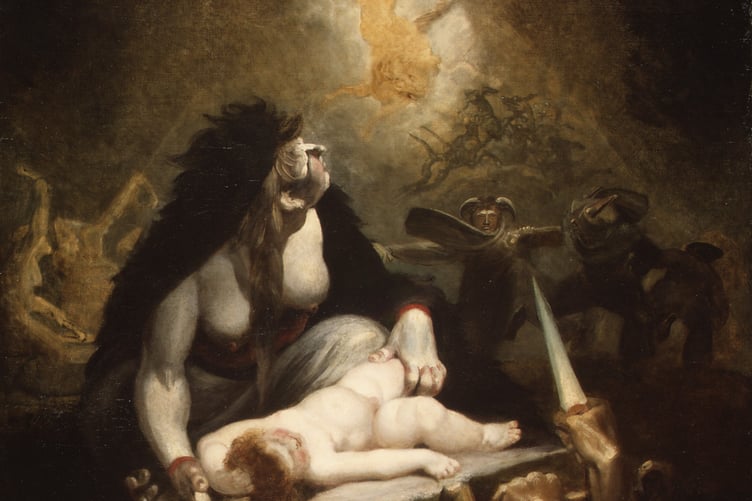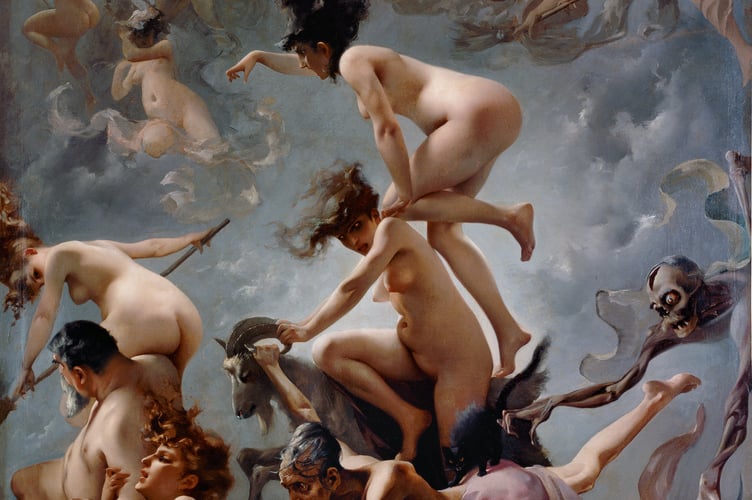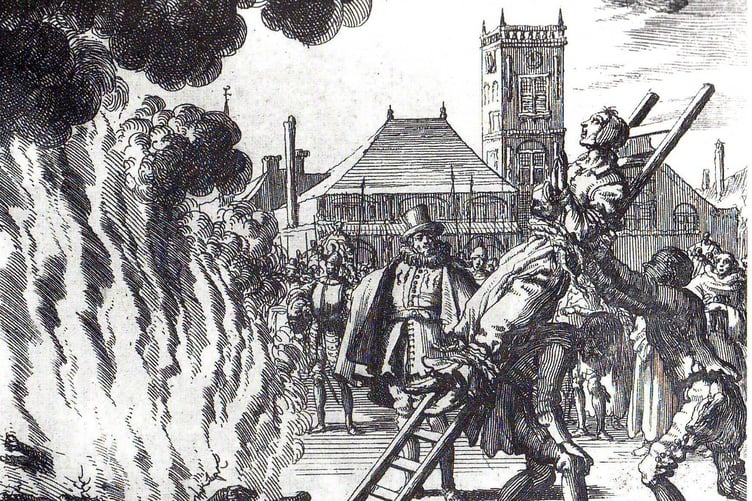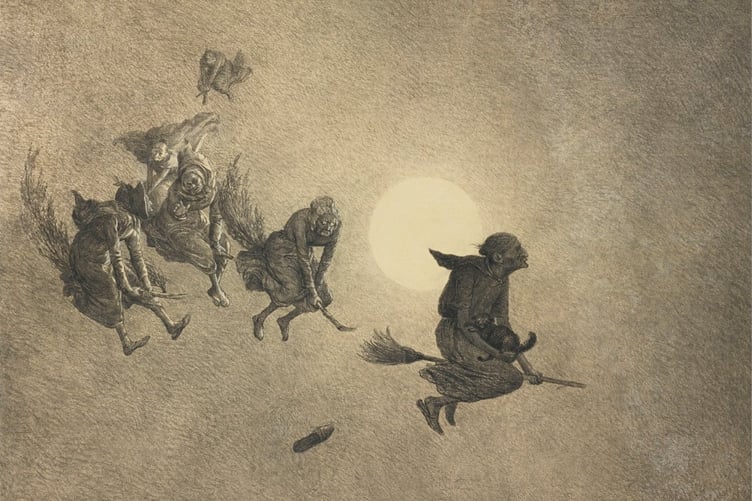THE medieval massacre of witches was a holocaust in all but name. The world had seen nothing like it before. Countless women were hunted down, savagely tortured, and executed by fire, rope, water, and blade.
Amongst the carnage and bloodthirsty heckles of the righteous mob, there were voices of dissent, such as Swiss radical thinker Johann Wecker and the Dutch writer Johann Weyer. Both argued that the continual persecution of witches was wrong and argued for more understanding and tolerance. They were routinely ignored. The people wanted a scapegoat, and the witch fitted the bill perfectly.
Cruelty has a human face, a human heart, and an all too familiar crusade.
During the reign of Elizabeth I, William West published a tract on how to identify a witch. It reads, “A witch or hag is she who - deluded by a pact made with the devil through his persuasion, inspiration and juggling - thinks she can bring about all manner of evil things, either by thought or imprecation, such as to shake the air with lightnings and thunder, to cause hail and tempests, to remove green corn or trees to another place, to be carried on her familiar spirit (which has taken upon him the deceitful shape of a goat, swine, or calf, etc.) into some mountain far distant, in a wonderfully short space of time, and sometimes to fly upon a staff or fork, or some other instrument, and to spend all the night after with her sweetheart, in playing, sporting, banqueting, dancing, dalliance, and other devilish lusts and lewd disports, and to show a thousand such monstrous mockeries.”
Although the more playful amongst you might be thinking, ‘not bad work if you can get it!’ Witchcraft was no laughing matter when there was a relative army of misogynistic and hysterical men ready to drown, burn, lynch, and impale you at the stake on the premise that you were fornicating nightly with satan and his lieutenants.
Yet even back in the days when an entire village could be wiped out on the premise that some old cow had taken ill and the harvest was a bit poor, there was still a general consensus amongst many god-fearing folk that their were good (white) witches as well as bad (black) witches.
White witches were also known as ‘cunning folk’, and they served a valuable service to the community.
If you were a bit under the weather, they’d know exactly what combination of herbs to have you feeling right as rain again. If you’d lost something, there had an uncanny knack of locating it. And they were also said to be skilled at predicting the future.

England’s first pamphlet on witchcraft, Henry Holland’s ‘Treatise Against Witchcraft’ differentiates between white and black witches by explaining in old world speak, “Hereby it is manifest, that hurtfull magitians and witches which kill and hurt mens bodies and goods, are onely to be avoyded, and so they goe amongst us, but such of these practitioners, as can and will cure the sicke, finde thinges loste, have a good neere geese in praedicitons, and are not in any wise to be blamed… are often sought after in necessities unto this day, and they seeme to doe no man harme, but much good, and they speake the very truethe often.”
Yet when it came to dealing with women who were a little above their station, influential pamphleteer Richard Bernard took the stance that, “All witches, in truth, are bad witches, and none good.”
Blaming witches for everything from a cow that won’t produce milk to a lame horse and a bad harvest was a convenient tool to persecute and punish anybody that the mob had decided needed a lesson in the art of righteousness.
There are documented cases of women being accused of witchcraft after a cow fell over a stile and broke its neck, and one instance where a Norfolk farmer accused a local woman of high sorcery because his boar “could not cry or grunt as beforetime.”
It’s no accident that the vast majority of witches imprisoned, trialled, and butchered by unremarkable and gleefully sadistic men were from poor and agricultural backgrounds.
Which makes it quite ironic that King James I was one of the most notoriously bloodthirsty witch hunters in history.
The King of England, who reigned from 1603 to 1625, made it his personal business to launch a crusade that would end with the deaths of thousands of women in his native Scotland, as well as hundreds more in England.
Imagine for a second, being a poor, illiterate woman from a rural community whose sleepy village one day awakes to the sound of heavy hooves, loud, official voices, and the unusual and unwelcome sight of the king’s men on the king’s business. And their business was to accuse you of witchcraft!
If you’ve got little chance against a tie and a crest, what chance have you got against the superstitious sadism and pompous authority of the scholars and state who have decided you’re in league with Satan and need a short, sharp shock?
The question of why so many people, for so long, believed, or made themselves believe in the evil of the ‘witches’ they were executing has never been successfully answered.
Although the educated elite would line up to pen weighty treaties on how to recognise a witch and why they should be prosecuted, there is one notable thing missing from the historic records of this period - the voice of the ‘witch’ herself.
In a society and time where women held a subservient position in general, the protestations of innocence from a woman from a poor background who was accused of being a witch by her betters were not deemed worthy of an official record.
In fact, the trial records of most witches are notable by their complete absence.

The women chosen to die at the stake were mainly plucked from the uneducated and illiterate masses and could easily be intimidated by the weight and reach of state-backed authority.
It was a man’s world, and the ‘witch’ could burn without a voice, lest it poison the minds of the innocents.
Yet, in the name of keeping things fair and balanced, there were a handful of ladies of high rank who were executed for being a bit witchy. Such as Isabella of Angouleme, Joan of Navarre, Elizabeth Woodville, and, of course, Anne Boleyn.
The one thing all these ladies of high rank had in common? Powerful husbands who wanted shot of them!
At its dark beating and devious heart, witch hunting was about persecuting someone for daring to be different.
Yet in some cases, there was a stark financial motive for accusing a person of witchcraft. When they were dead, what could become of their land, home, and possessions?
If the witch were a widow, her house and farm would, in the best case scenario, be auctioned off for a steal by the state, but in most cases, it would be simply stolen as brazen and accusing neighbours moved in.
It’s quite remarkable how often a witch was a single, unmarried, or widowed woman who tended to live alone.
The publication of Malleus Maleficarum, or The Hammer of Witches, in 1487 by Heinrich Kramer turned a personal hobby into a European bloodsport with its detailed discussion of how to detect and punish potential witches.
Heinrich Kramer’s backstory gives an illuminating insight into the mindset of a man who saw witches everywhere and who was instrumental in the massacre of thousands.
Kramer was a monk of the Dominican Order and the assistant to the Archbishop of Salzburg. He was also an Inquisitor.
After moving to Innsbruck to cleanse the town of its witch infestation, Kramer fell foul of an independent, intelligent, and free-thinking lady named Helene Scheubenn. She spat at Kramer in the street and then cursed him with the words, “May the falling evil take you.”
As a man used to placing women in bondage and burning them alive as the crowd roared their approval, Kramer did not take kindly to being belittled by a female of the species. Helene’s refusal to attend his church services was all the excuse he needed to denounce her as a witch.
Yet his campaign of hate backfired spectacularly. Helena was not some hapless country girl who could be murdered quietly in the name of men who knew better; she had powerful connections and knew how to use them.
The Bishop of Brixen sent Kramer running with his tail, possibly forked, between his legs. But like a cornered rat, he was now at his most deadly.
After fleeing to Cologne, he began work on the book he would be remembered by and what would become the witch finder’s bible - Malleus Maleficarum.
This misogynistic masterpiece focused on what Kramer termed as the weakness of women and how their lewd and promiscuous nature made them susceptible to being seduced by Satan.
He wrote, “Women are intellectually like children. The natural reason is that she is more carnal than a man. It should be noted that there was a defect in the formation of the first woman, since she was formed from a bent rib, that is, a rib of the breast, which is bent as it were in a contrary direction to man. And since through this defect she is an imperfect animal, she always deceives. For Cato said, ‘When a woman weeps, she weaves snares. And again: When a woman weeps, she labours to deceive a man.’”
Although the book was denounced by top theologians who called it unethical, it was a hit with Magistrates throughout Europe who used it for guidance when pronouncing what an accused witches’ fate should be.
By the tail end of the fifteenth century, the whole of Europe lay in the shadow of the witch, or at least with the fear of being accused of being one.
Martin Luther’s Protestant Reformation of 1517 fanned the flames of the witch-hunting frenzy even further when he declared all witches were whores of the devil and should be burned. Not one to miss out on the hate party, Protestant reformer John Calvin made a habit of quoting Exodus and declaring that witches “must be slain.”
Psychopaths like Witchfinder General Matthew Hopkins and his partner John Sterne, who in the modern world would have probably ended up as serial killers, roamed the countryside without any direct authority from the government, happily torturing vulnerable women and sending them off to be executed. The best part? They charged the town or village for their dubious services.
Although Hopkins died in his twenties from a sudden illness, he was responsible for the deaths of hundreds of women.
Unlike the poor souls he condemned to a violent end, Sterne died peacefully in his bed.
Primarily operating in the East Anglia area, there is no record to show Hopkins and Sterne ever entered Wales.
It’s doubtful they would have received a warm reception if they did. Because in Cymru, we did things a little differently when it came to witches.
Historically, there are only 42 cases of witchcraft trials on record for the whole of the country.
To put it into context, although 1,000 witches were killed in England, and 4,000 were sent to their graves in Scotland, only five were killed in Wales, and that was all in the North of the country.
Yet that was still five too many.
Gwen ferch Ellis was a herbalist who was hanged in Denbigh town square in 1594. Her real ‘crime’ was to cross a member of the landed gentry.

The Caernarfon witch trial of 1622 saw three witches from the same family executed. Rhydderch ap Evan and his sisters, Lowri ferch Evan and Agnes ferch Evan, were all charged with causing the fatal sickness of one Margaret Hughes by sorcery and the bewitchment of her daughter, Mary, who had been rendered mute and lame. In reality, Margaret had died of a disease, and her daughter had suffered a stroke. But because Margaret’s husband was a member of the landed gentry, it was easy for him to lash out in his grief and find a scapegoat.
Finally, Margaret ferch Richard was hanged in Beaumaris in 1655. She was a widow who sold charms. She has the dubious distinction of being the last witch to be executed in Wales.
It is thought that Wales, by and large, escaped the murderous mania of the witch hunts for a number of reasons.
Firstly, the word ‘witch’ was not recognised in the Welsh Tongue, and no one recognised its negative connotations. Furthermore, 95 percent of Welsh communities were Catholic and Welsh speaking and as such tended to embrace the magical side of religion more than the Protestant communities in England,
Most importantly, as Phil Carradice, author of the book “Witches & With Hunts Through The Ages,” points out, the rural communities of Wales respected and relied upon their wise women.
"There were no doctors, no hospitals... if you wanted help for yourself or your animals, they would turn to their wise women.” He said.
"They made potions and charms and were an accepted part of the community.”
It may seem a perverse thing to take pride in, but in a world where the lessons of witch hunting remain largely unlearned, and where we are still unnaturally quick to demonise ‘the other’ while extolling our own virtues, the open-minded acceptance and refusal to give in to mob mentality that Wales extolled in medieval times is a timely reminder to us all.
Happy Halloween!





Comments
This article has no comments yet. Be the first to leave a comment.